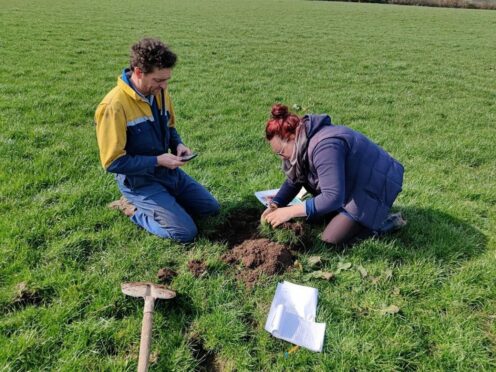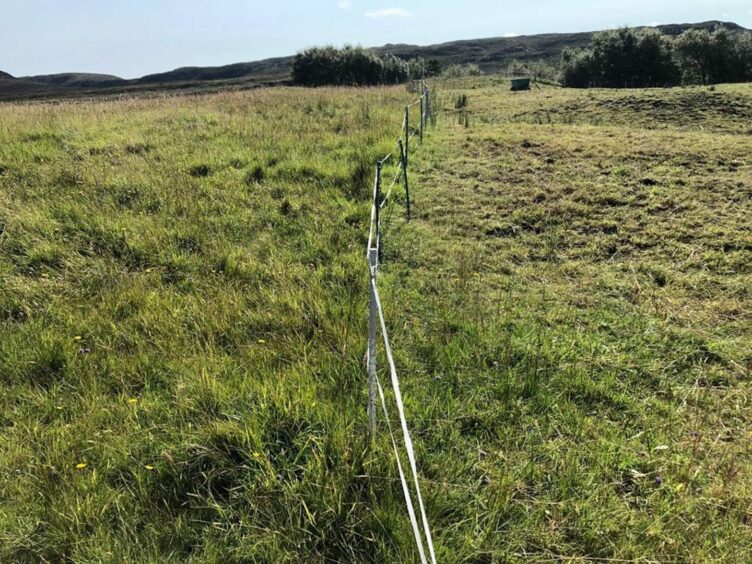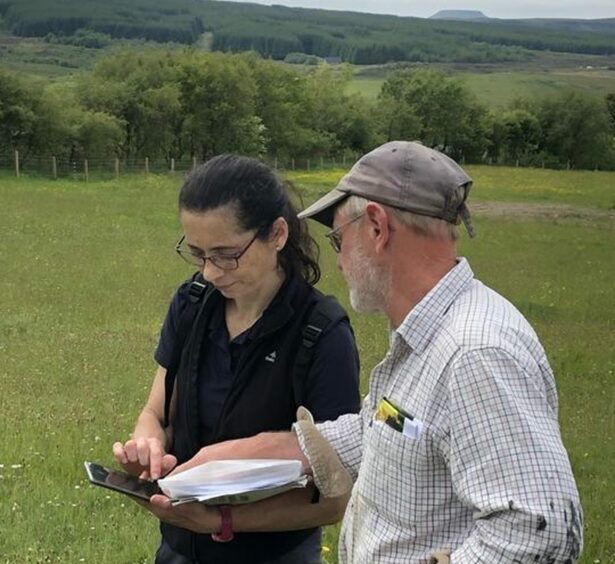Agriculture uses 70% of land in Scotland, so it makes sense that our farmers and crofters will have a key role to play as we tackle the biodiversity emergency. Here we take a closer look at the importance of farming with nature for our shared future.
-
Some Press and Journal online content is funded by outside parties. The revenue from this helps to sustain our independent news gathering. You will always know if you are reading paid-for material as it will be clearly labelled as “Partnership” on the site and on social media channels.
This can take two different forms.
“Presented by”
This means the content has been paid for and produced by the named advertiser.
“In partnership with”
This means the content has been paid for and approved by the named advertiser but written and edited by our own commercial content team.
Scotland, and indeed the whole planet, is in a precarious position. Daniel Gotts, programme manager for Farming with Nature at NatureScot, says: “We’re facing two emergencies: nature and climate.
“We need people from all parts of society and all economic sectors to help tackle these emergencies.
“All farmers and crofters need to be involved, because farming and crofting cover most of Scotland’s land. It’s intricately linked with nature and biodiversity, and has an impact on climate change.”
Plans are afoot to help address this major challenge, including the Scottish Government’s Biodiversity Strategy 2045 which sets out a vision for Scotland’s nature-rich future.
The role of farming in nature and biodiversity
Transforming the way we use and manage land will be critical to help nature recover. The Scottish Government’s Vision for Scottish Agriculture sees Scotland as leading the way in sustainable and regenerative farming.
And farmers and crofters will be key drivers of this change, helping to restore nature, reverse species loss and reduce carbon emissions.
After all, changes to agricultural practice over the last century have contributed to the loss of nearly 25% of our wildlife in the last 30 years. That includes significant decreases in farmland bird numbers (a 50% loss of greenfinch, kestrel and lapwing) and a long-term decline in pollinators and species-rich grasslands.
Daniel explains: “For all understandable reasons, we’ve intensified food production to produce livestock, dairy products, cereals and other crops. That has had an effect on both the climate and on nature.
“There are significant emissions from agriculture, but some well-managed farmlands and croftlands can be an important way of capturing and storing carbon, taking it out of the atmosphere.
“Biodiversity has been affected by the intensification of cultivation, increased livestock numbers, the use of pesticides, and the conversion of habitat to farmland – that has led to a decline in nature across a lot of farmland.
“Measures have been in place now for a number of years to reverse that. These are having an effect in certain areas and there’s been some progress.”
However, major agricultural change is needed for a continual reversal of biodiversity decline. We need to look ahead, rather than at what’s behind us.
Daniel adds: “It’s not always about going back to some time and situation from the past; it’s about where do we need to get to? That’s farming with nature and nature-rich farmland, where sustainable food production can be combined with looking after nature and making space for nature.”
If Scotland can meet its ambitions for regenerative and sustainable farming, we’ll have the chance to improve our wellbeing, with local sustainable foods increasing our economic and environmental health.
Helping farmers and crofters tackle the nature emergency
A lot of farmers and crofters already understand how food production and supporting biodiversity can go hand-in-hand.
In fact, nature-friendly and regenerative farmers are using a variety of methods to improve the health of their land. This includes:
- Practising low-input methods and minimising chemical inputs.
- Improving soil health by rotating crops, integrating livestock into arable systems, using no-till systems that prevent soil erosion, and growing cover crops after the crop has been harvested.
- Planting native woodland which supports biodiversity, provides clean air, carbon storage and erosion control.
- Protecting and restoring features such as ponds, hedges and wildflower margins to encourage diversity.
But it remains a big challenge to restore and regenerate biodiversity by 2045. Even more farmers, crofters and other land managers need to be encouraged to return nature to our fields and countryside.
Daniel says: “We recognise that we’re looking for quite a significant change over the next 20 years or so. We know many farmers are ready to make the change and we need to help them along that route, because it is a big change.”
That’s where NatureScot – Scotland’s nature agency – comes in.
What is NatureScot’s role in restoring biodiversity in farming?
NatureScot is leading four pilot projects to develop systems that protect natural capital and biodiversity. These will also help the Scottish Government in its programme to reform agricultural support.
So far this has involved working closely with farmers and crofters to develop methods of mapping and measuring the condition of habitats and levels of biodiversity. They will then test nature-friendly land management practices and how they improve environmental outcomes.
This has involved working with around 100 farmers and crofters on different farm and croft types across the country, from dairy farmers in Dumfries and Galloway to crofters looking after machair and blanket bog in the Outer Hebrides.
So what is the next phase? NatureScot is now looking at developing user-friendly digital tools to help farmers and crofters deliver benefits for nature and the climate. This includes apps to help farmers assess what nature they have on their farmlands, and the condition this nature is in.
Working closely with farmers and crofters, and getting their insight, is vital.
Daniel explains “The good thing about working with farmers and crofters on the ground is we get their feedback. That’s informing the evolution of the project all the way along, and we’re also addressing challenges like mobile connectivity in rural areas.”
For example, NatureScot is looking at how slow data downloads would impact digital tools and the use of apps that don’t need an always-on internet connection to work.
This will mean that NatureScot can create genuinely useful tools, while the farmers and crofters involved in the development can help spread the word about what they’ve been doing.
After all, knowledge exchange between peers is already strong amongst farmers and crofters. Daniel explains: “Many farmers get most of their knowledge, information and new ideas from their neighbours, rather than from anyone else.
“My family were in farming for a number of years in Orkney and then in Aberdeenshire. We were always learning things from our neighbours, sharing information. That’s a key way farmers and crofters learn.
“So it’s about helping that knowledge-gathering and knowledge-exchange process happen.”
What can farmers and crofters do now?
While it can feel overwhelming when thinking about the nature and climate emergency, agriculture in Scotland proves that small steps can help deliver solutions. NatureScot will be working with farmers and crofters to get there, but there’s a chance to make a real difference through farming with nature.
All farmers and crofters can get involved, if they aren’t already.
Daniel advises: “We would encourage farmers and crofters to think about what they have on their farm or croft already in terms of biodiversity. Look at how they can manage that and make it better for nature.
“And keep engaged with the development of the agricultural support framework, in whatever way – providing your input, ideas.”
Keep an eye out for NatureScot’s projects. The agency knows farmers and crofters have a lot of knowledge. It wants to work together to solve this challenge.
And ultimately, the message is clear: sustainable farming and crofting can produce high-quality food in a low-carbon way, while also delivering for nature. Farmers and crofters across Scotland are already doing this, we need to see more taking similar action.
Find out more about farming with nature and the work of NatureScot.


